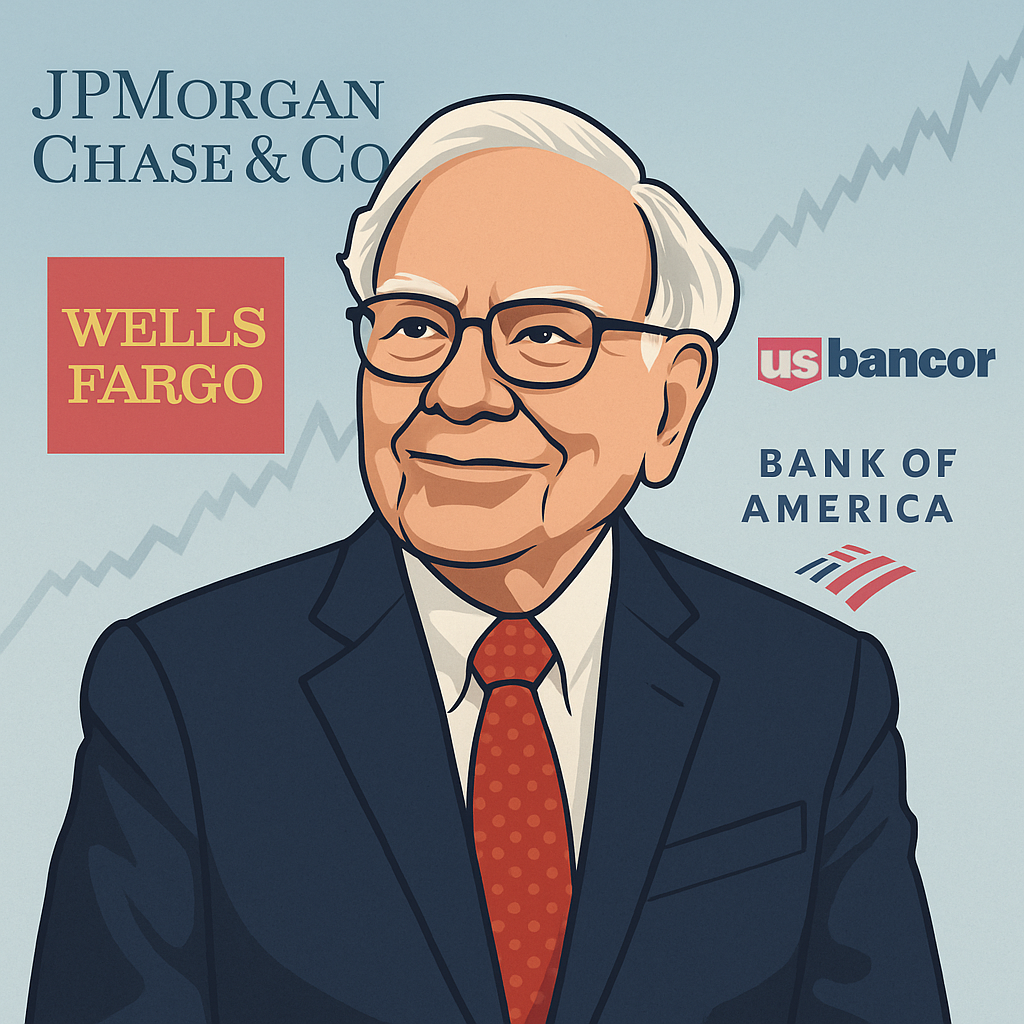Buffett’s Bank Bets – Missed Gains & Lessons
Between 2020 and 2022, Warren Buffett slashed Berkshire’s stakes in big banks such as JPMorgan and Wells Fargo. Five years later those shares have soared — a reminder that even the best investors can misread an industry, but also proof that a few great decisions can still deliver extraordinary long-term results.

Buffett’s Big Bank Moves Under the Microscope
Introduction
Warren Buffett has long been admired for his ability to buy quality businesses at the right price and hold them for decades. Yet his handling of big-bank stocks in recent years shows that even the most disciplined investors can misjudge an industry’s trajectory. In 2020, amid a pandemic-driven downturn and regulatory headwinds, Buffett sharply reduced Berkshire Hathaway’s exposure to banks—selling large portions of Bank of America and completely exiting JPMorgan Chase, Wells Fargo, and U.S. Bancorp. In hindsight, this sweeping retrenchment from financials did not play out as he had expected.
JPMorgan Chase – Missed Out on ~215% Gain in Just 5 Years
At its peak, Berkshire owned about 59 million shares of JPMorgan Chase valued at roughly $6.6 billion. In 2020, Buffett sold the entire position at an average price of about $105 per share, realizing around $6.3 billion in proceeds. His average buy price was about $100 per share—so Berkshire’s actual gain was only about $300 million. If he had held the entire stake until today at about $315 per share, Berkshire would have been sitting on nearly $18.7 billion in value and an estimated $12.8 billion profit—essentially a +215% return on cost in five years.
| Metric | Shares | Price per Share | Total Value | Profit | Profit % |
|---|---|---|---|---|---|
| Bought | 59M | $100 | $5.9 B | — | — |
| Sold (2020) | 59M | $105 | $6.3 B | $0.3 B | +5% |
| If Held (Today @ $315) | 59M | $315 | $18.7 B | $12.8 B | +215% |
Wells Fargo – Missed Out on ~260% Gain in Just 5 Years
Berkshire’s relationship with Wells Fargo stretched back more than three decades. As of 2017, its average purchase price across the stake was about $24 per share, and Berkshire’s cost basis for 449 million shares was about $10.6 billion. Berkshire exited the position in 2022, reportedly selling shares at an average price of $26 per share, realizing only about $1 billion in profit. Had Buffett simply held the entire stake until today at roughly $85 per share, Berkshire would be looking at a market value near $40 billion and an estimated $27.6 billion profit—roughly a +260% gain on cost in five years.
| Metric | Shares | Price per Share | Total Value | Profit | Profit % |
|---|---|---|---|---|---|
| Bought | 449M | $24 | $10.6 B | — | — |
| Sold (avg 2022) | 449M | $26 | $11.7 B | $1 B | +10% |
| If Held (Today @ $85) | 449M | $85 | $38 B | $27.6 B | +260% |
Other Banks
Buffett’s decision to unload not just JPMorgan and Wells Fargo but also U.S. Bancorp and to trim Bank of America meant Berkshire missed a broad rebound in large banks. Had he held on to these other stakes as well, the combined gains would likely have been much larger than the already striking numbers for JPMorgan and Wells Fargo alone. What’s more, he stayed on the sidelines during 2022–2023, when most bank stocks were hammered down to bargain valuations, missing an opportunity to re-establish positions at steep discounts before their subsequent recovery.
Conclusion
Buffett’s retreat from bank stocks shows how even legendary investors can misjudge an industry’s future. Yet Berkshire’s long record — built on a handful of big, patient bets such as Apple, Coca-Cola, and American Express — proves that you don’t have to be perfect to win. It’s also a reminder that Buffett often looks wrong in the short term but has been proven right many times over the long run. Only time will tell whether his exit from bank stocks will be one of his rare permanent missteps or another example of his long-term foresight. For ordinary investors, the lesson is clear: focus on quality, patience, and discipline rather than trying to get every call right.
Leave a Comment